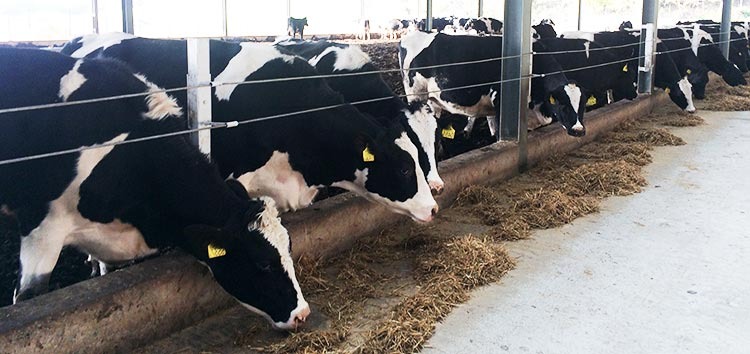EBRD and TCI invest in the future of Georgian dairy

Georgia s dairy farmers need to boost milk quality standards after DCFTA
Georgians have a proud tradition of dairy products but in recent years Georgia s dairy farmers have struggled to meet production and quality demands. Only one-tenth of the milk market is from imports and processors increasingly rely on foreign milk powder to bolster supply.
Following independence in 1991, dairy farm ownership shifted from the state to the private sector and industrial processing largely gave way to small-scale, home production. Since then, productivity has fallen, while imports of milk powder and foreign dairy products have increased.
Furthermore, the lack of quality control means that consumers face a dual challenge of food safety concerns and falsified products, which are a growing problem for the country’s dairy industry. Georgian dairy farmers have faced these issues for years but the need to address them has become urgent in light of the new Deep and Comprehensive Free Trade Agreement (DCFTA) with the EU. As Georgia moves to harmonise its food safety legislation with that of the EU, farmers will have to meet certain standards if they are to survive, let alone grow and export.
The FAO Investment Centre is working with the EBRD to pave the way for improved food quality and safety for Georgian dairy products.
Starting with a review of commercial dairy farms and an overview of the national milk market, FAO has developed recommendations to support dairy producers, processors and traders while protecting consumers.
The first step is education. Productivity is far below potential, but this can be greatly improved through targeted training. Dairy farmers generally lack knowledge about modern technologies for milk production, which can be boosted with better feed and health care. Milk production experts and veterinarians are scarce so a push for specialised education would also be beneficial.
The second step is attracting investments to build new dairy farms and modernise existing ones. The technology needed to improve processes and increase quality exists – it just needs to be transferred. The EBRD led the way in 2013 with a USD 1.3 million loan to Kvareli Baga to construct a new dairy farm in East Georgia. The farm was built to maximise open air grazing and already hosts over 600 cattle, of which 370 are milking cows with production levels far above the country’s average. FAO has found that existing large and medium intensive farms could almost double their profits by implementing simple changes and adopting modern technology like Kvareli Baga. Improving infrastructure and building farmer capacity will translate into better milk safety and quality to everyone’s benefit.
If these efforts are successful, commercial milk production and processing will see immediate results and Georgia could approach self-sufficiency in just five years. Georgian dairy farmers will be able to reclaim their tradition and consumers will finally be confident in the quality, safety and authenticity of the milk they drink.
For the EBRD/FAO project video, please see here.
